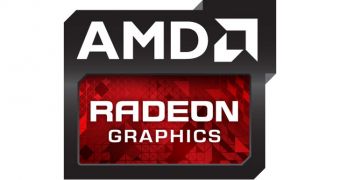Website updates can be a wonderful thing. Sure, they're usually accompanied by lag and downtime that give users and admins a lot of grief, but then there are also certain slips that benefit the public, as has been the case with the HIS Radeon Rx 200 graphics cards.
HIS has since taken down the premature information, but before it did, the placeholders it put on its website for no fewer than seven new graphics cards were spotted by VideoCardz.
Rx is the moniker that Advanced Micro Devices is using for its next collection of video cards, with R9 being the high-end series.
Clearly, the Sunnyvale, California-based company is changing its image a bit, just like LG changed its logo at IFA 2013 (from “Life's Good” to “It's All Possible with LG”).
Sadly, the placeholders didn't actually reveal much about the HIS graphics adapters. Only the names, the coolers that will be used, and the amount of memory.
However, that's still better than we were expecting at this stage. What follows is the list itself.
HIS R9 280X iPower IceQ X² Boost Clock 3GB GDDR5 PCI-E DLDVI-I/HDMI/2xMini DP HIS R7 250 iCooler 2GB DDR3 PCI-E HDMI/SLDVI-D/VGA HIS R7 250 iCooler 1GB GDDR5 PCI-E HDMI/SLDVI-D/VGA HIS R7 250 IceQ 1GB GDDR5 PCI-E HDMI/SLDVI-D/VGA HIS R7 240 iCooler 2GB DDR3 PCI-E HDMI/SLDVI-D/VGA HIS R7 240 IceQ 2GB DDR3 PCI-E HDMI/SLDVI-D/VGA HIS R7 240 iCooler 1GB GDDR5 PCI-E HDMI/SLDVI-D/VGA
As you can see, the only R9-series adapter is the first in the collection. It does seem to be powerful, with 3 GB GDDR5 VRAM, four video outputs and the iPoer IceQ X² cooler.
Don't get the wrong idea though. At most, this is an upper-mainstream, performance-level video controller.
The true high-end cards will be the ones from the R9 290 series, the ones that will be equivalent to Radeon HD 7900/6900, and those HD 9900 that, apparently, won't pan out after all, since AMD is using a new naming scheme.
The DDR3-powered HIS graphics adapters might use a cut-down Tahiti 28nm GPU, or a low-power Tahiti of some sort.

 14 DAY TRIAL //
14 DAY TRIAL //